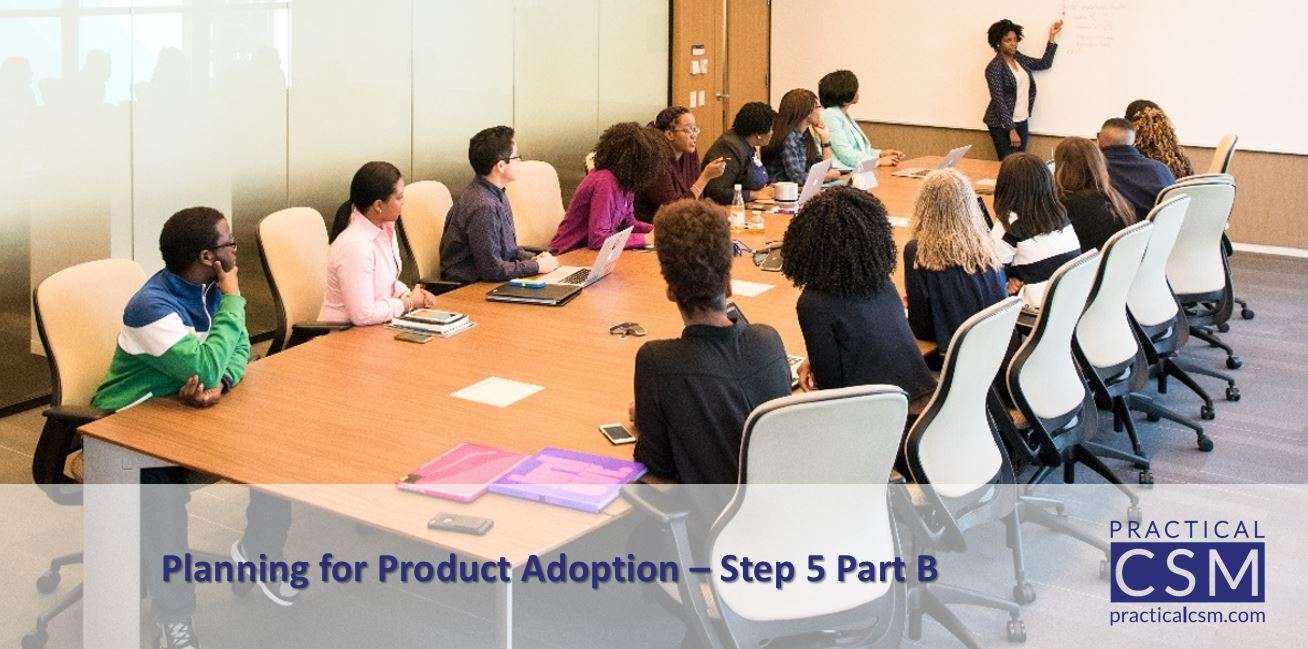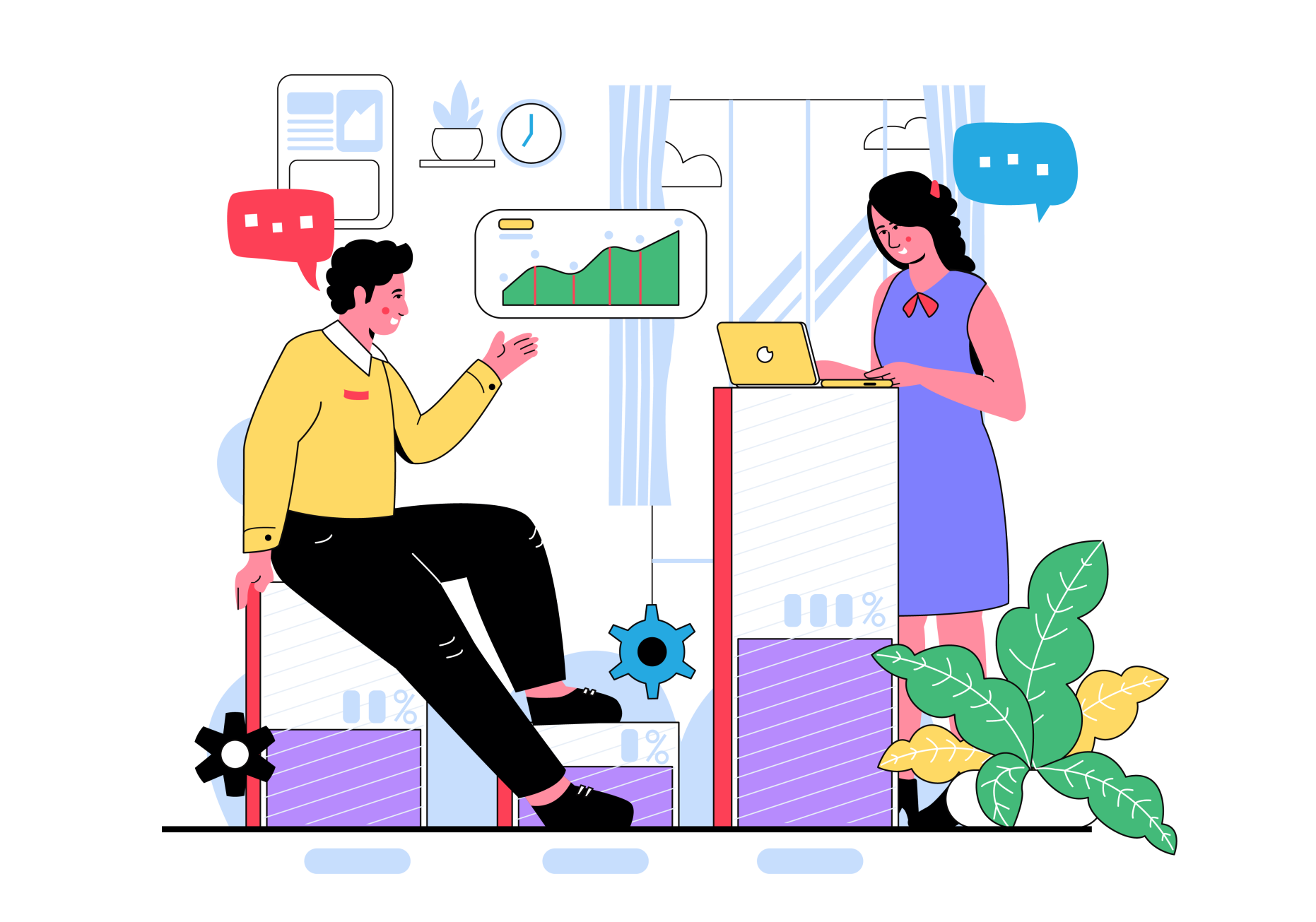Introduction
Depending upon the product (or service) in question, full product adoption can be a potentially quite complex and even onerous task to perform well. As with all complex tasks, the secret is to break it down into its constituent components and then to deal with each component one at a time (as much as possible at least). There are many ways in which product adoption could be divided up and broken down into separate parts. The steps I have divided up adoption planning into are shown below:
Step 1: Determine Adoption Requirements
Step 2: Identify Process Changes
Step 3: Create Impacted Groups (IGs)
Step 4: Document Practical Considerations
Step 5: Determine Communication, Training and Support Requirements
Step 6: Capture Adoption Barriers and Risks
Step 7: Create Outline Adoption Plan
Step 8: Create Adoption Proposal and Gain Acceptance
Step 9: Complete Full Adoption Plan and Publish Adoption Roadmap
In my previous articles I explained the first four steps and the first half of the fifth step in adoption planning, taken from Chapter 8 of my book Practical Customer Success Management. This week I’m concluding Step 5: Determine Communication, Training and Support Requirements. As I have mentioned in the previous articles in this series, being a chapter from the mid to later stages of the book, it does assume knowledge attained from previous chapters, and it also mentions downloadable tools that purchasers of the book have access to. But hopefully as a standalone series of articles it will provide a useful reference for CSMs who are looking for a way to break down the adoption planning process into a series of tasks and to learn how to perform each task efficiently and effectively. Also just to mention that of course adoption planning (and the use of the tools discussed herein) is also covered in detail in my Certified CSM Professional training program and within the upcoming Practical CSM Academy subscription site.
Step 5: Determine Communication, Training and Support Requirements (continued)
Informal training versus formal training
Formal training is training that is determined and organized by the organization and the users are then told what training activities to attend and when to attend them. Informal training is training that users can select themselves based upon their own understanding of their personal needs and or preferred learning styles.
Formal training is useful for ensuring that all users within a particular IG fulfil specific training obligations – perhaps in order to put these users through an externally awarded certification of competency for example, or simply to ensure uniformity of learning between all members of the group. The disadvantage of the formal route is that it can be inefficient or frustrating when viewed from the perspective of an individual user, since they will be forced through a prescribed training program that may not suit their personal needs or preferred training style.
Users’ needs may differ from individual to individual even within the same IG, since one user may already know more or less than another user (perhaps for example due to their previous experiences in other roles). User’s preferences may also differ, since some people may for example respond better to face-to-face training from an instructor, whereas others may prefer to self-study from books or multimedia content, and so on. The informal route can therefore be a great choice where the customer organization wants to provide multiple training options for users to select from. This is great where individual workers are trusted and encouraged to create personalized training paths to suit their own needs and/or preferences.
Accessing existing training assets and resources
An important aspect of the value to the customer of the CSM is the CSM’s knowledge of what is already available in terms of training assets and resources related to the CSM’s company’s products and services. This will of course include any training courses or content which the CSM’s own company offers, as well as other training courses or content that are produced, managed and delivered by third party training organizations and other companies.
CSMs should be well prepared with relevant information regarding what is currently already available, which should include where the training content comes from, what the costs are, what its availability is (including locations and languages) and its relative strengths and weaknesses compared with the other offerings. The CSM should make sure that they do not come across as a salesperson or promotor of their own company’s training offerings over other organization’s offerings, but should instead make sure they have done their research well on this topic and then provide open, honest and realistic advice as to what is available and what might best suit the specific requirements of this customer.
Developing customized training content
If the “right” training content to meet one or more specific user training requirement does not already exist then it may be necessary to create it. This can add further costs in both time and money to complete, but of course if the training is required but is not already available then there is nothing for it but for it to be developed, and the appropriate time and money will need to be assigned for this to happen.
Generally speaking there will be some existing training content that can be adapted. This will reduce costs considerably since it will only be a percentage of the overall content that will need to be written rather than all of it. Assuming there is an existing generic course that is available, oftentimes it is only a small percentage of this generic course that needs any change. These changes might deal with any customization of the standard products and services that have taken place, or might explain the utilization of one or more tools within the customer’s own processes for example.
As a general rule, any customization of training content that the CSM’s own company performs on behalf of the customer will not be included at no charge, even if the generic training content is usually provided at no charge, since it incurs development time to create the customized version.
Phased and/or staggered training delivery
Training for any one IG does not necessarily need to all be delivered at the same time, or during the same phase of the adoption program. It may be more efficient and/or effective to “sheep dip” a group of users through the entire training they require all in one go, before moving on to performing the same operation with another group of users. This is especially the case with geographically wide-spread users where either trainers or users will need to travel in order for the training to be delivered.
On the other hand, it may be more efficient and/or effective to perform the training across multiple rounds or phases over time where certain aspects are covered initially and other aspects are covered later. This might be phased based upon difficulty (for example a foundation course at the beginning followed by an advanced course at some later stage), or it might be phased based upon functionality (for example the essential functions covered in the first course followed by additional non-essential but still useful functionality covered in a later course).
The decision for delivering the training in one go or in phases is generally a practical one, based upon availability of training materials and instructors, availability of users to attend training and the level of urgency of the users’ training needs.
Post training assessment and certification
Once the training has been delivered its effectiveness will need to be measured, and the level of readiness of the users who have undergone the training for performing the new or changed processes will need to be assessed. It may also be necessary for users to undergo either internal (to the customer) or external testing or examination to gain certification of accomplishing a minimum standard of knowledge and/or skills. Obvious examples of this would be for performing roles such as operating dangerous machinery (for example fork lift truck drivers) or managing critical corporate resources (for example IT security managers) or providing professional services advice to customers (for example the accountants in an Accountancy firm who provide the accounting services to the firm’s customers). In these cases both the training and the passing of required exams to gain certification needs to be very carefully managed and records need to be securely kept.
Even without formal internal or external certification it may still be important to informally assess training effectiveness, either to ensure that users are ready to perform their new roles and/or to measure the effectiveness of the training program in order to show the ROI (return on investment) to the project sponsors. This assessment can be done in a number of different ways including (though not necessarily limited to):
User appraisal
Let the users themselves determine whether the training has met their needs through a post-training assessment survey. This is generally the simplest and least cost method for assessing training.
Trainer appraisal
If the training has been delivered by an instructor then the instructor can be asked to assess the level of preparedness of users to perform their role. This does however require the trainer to understand the users’ roles and to spend the time to perform the task for every user who undergoes their training
Testing
This could be done by practical (eg skills-based) or theoretical (eg knowledge-based) testing which might be to a less formal and/or rigorous standard than formal or external certification
Manager appraisal
Managers (including team leaders or process owners) could be asked to appraise the post-training capabilities of the users and determine whether the users are now able to perform their required tasks effectively
Further discussion on measuring training effectiveness in order to determine adoption program ROI is covered in Chapter 9 of my book.
The role of the CSM in training
There are circumstances where the CSM may deliver some informal training on aspects of the solution. This will tend to be one-to-one or small group training that might only cover certain features and functions, and is typically delivered to the SPL (the ‘Senior Project Lead’ – my own expression for the key customer stakeholder that the CSM engages with on a routine basis) and/or other key stakeholders rather than impacted users. In almost all situations, even if the CSM has the knowledge and skills to perform training it is recommended that they do not do so. This is to ensure that they maintain their persona as a business outcomes focused customer success consultant in the eyes of customer stakeholders so that they can develop and maintain strong trust relationships with key business stakeholders.
What the CSM’s role is regarding training is to act as expert adviser to the SPL and other key customer stakeholders, helping them to understand what the different training options are for each training need that the customer and CSM uncovers during the analysis and planning processes, and acting as liaison between the customer and external resources owners such as the CSM’s own company’s training department and third party training companies with whom the CSM’s company has relationships. Performing this task well can add enormous value for the SPL and can be a great way to reinforce and develop the CSM/SPL relationship. Indeed it is one of the key ways in which CSMs can prove their specific value to the initiative.
Support Requirements
Post-change support
The third and final type of requirement that should be incorporated within an adoption plan is the requirement for post-change user support. Once the change has occurred (in other words once the changes have been implemented and any necessary training has been delivered, and the users have now stopped performing the old processes and started performing the new processes) users can still run into all sorts of difficulties that will need to be dealt with. These might include (though not be limited to):
| Difficulty | Description |
| Process-related problems | A particular process or specific process step may be found to be inefficient or to not perform as required and need to be changed |
| Tool-related problems | A particular tool or a specific feature or function of the tool may be found to be inefficient, or to not function as required and may need to be reconfigured or adapted/changed |
| Missing knowledge | Users may find that the training did not provide them with all of the knowledge they need to fulfil their new role |
| Missing skills | Users may find that the training did not provide them with all of the skills they need to fulfil their new role |
| User errors | Users might forget what they have been taught, or might make mistakes whilst performing their role. This is to be anticipated, especially in the early stages immediately post-training as it typically takes a while for users to gain familiarity with the changes |
| Additional user needs | Users might find additional uses for any new tools they have been provided with, and might have further questions about the tools’ features and functions |
| Emotional support | Some users may need some level of emotional support to help them through what might for them be a stressful process of dealing with change. |
| Technical problems | Any tool or system can malfunction, break or otherwise go wrong in some way or another and require a relevant expert such as a mechanic or an IT engineer to identify and fix the problem |
Types of support services
Perhaps the most obvious support service is the formal telephone support line or Internet-based support tool where users can log a support request and get access to support professionals who will respond to their questions and help resolve their problems.
Other support services might include self-service tools such as automated ”help” systems or pre-created FAQ (frequently asked questions) answers. Support tools might also include access to just-in-time training VODs (Video on Demand) that show users how to perform particular tasks or user particular features or functions of a system.
Also included within support services would be human-resourced support such as coaching and mentoring services. Mentoring means providing less experienced users with access to the time of a more experienced user who can share their expertise with the more junior user and in doing so transfer knowledge and skills. Coaching is where a user is provided with in-the-job training from a trainer or coach. Both coaching and mentoring can be very effective for the right users. Mentoring works well when there are sufficient numbers of more experienced users who are available to provide the mentoring services to more junior or less seasoned users. Coaching works well when the subject matter requires expert trainers or coaches who have specific coaching and training skills, or simply when mentoring would not be practical.
Support service packages
Support for users can be provided in a variety of ways to suit the specific needs of different user groups. Best practice generally dictates that a package of suitable support needs to be identified, developed and put into place to fulfil the support requirements of each IG. Some of these support services might be fairly short term but more intensive in terms of cost and time involvement, whereas other components might be longer term. An example might be coaching or mentoring for just the first month following training only, together with ongoing access to a telephone support line, a self-service online help system and a FAQs tool.
The role of the CSM in support activities
As with both the previously discussed communication and training activities, the role of the CSM in support activities is to help the SPL and other customer key stakeholders to determine what each IG’s support requirements are and then to design a package of support services to meet those requirements. CSMs should be familiar with the pros and cons of the different types of support activities so that they can provide good quality advice to the customer. CSMs should of course also be aware of what the CSM’s own company offers as included and additional (for a professional fee) support services and what other third party organizations offer, and the main differences between each offering.
The adoption activities checklist
Since there is a lot to consider when determining appropriate adoption activities to meet the needs of each IG, I have provided a tool called Adoption Activities Checklist which purchasers of my book (from which this article is taken) can access from the Downloads section at www.practicalcsm.com. This checklist provides a simple way to work through and document the communication, training and support needs of each IG in an orderly manner in order to reduce mistakes or omissions and to increase efficiency.







